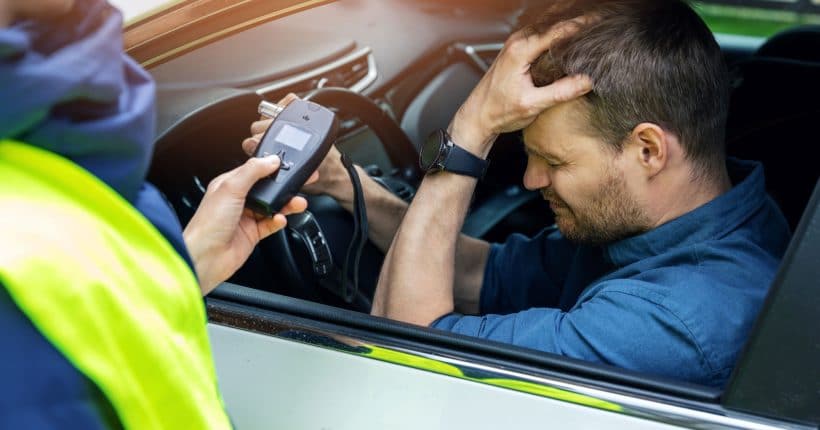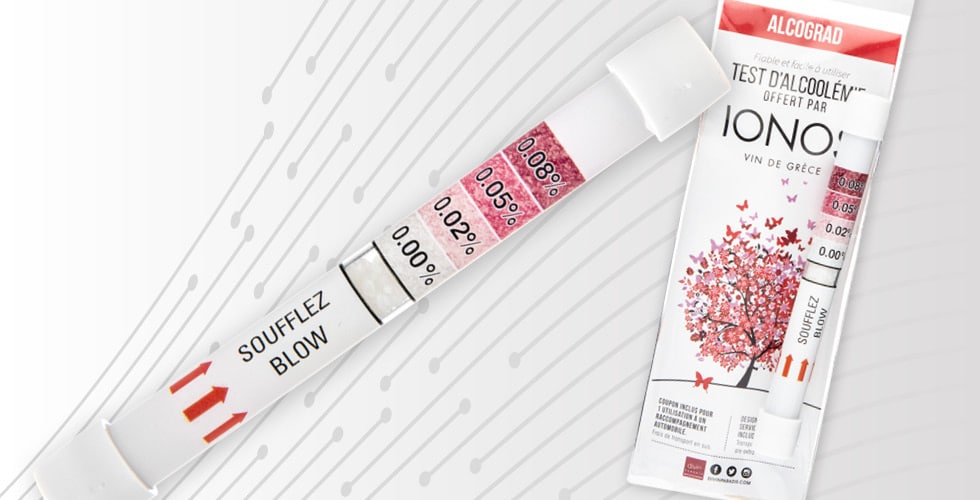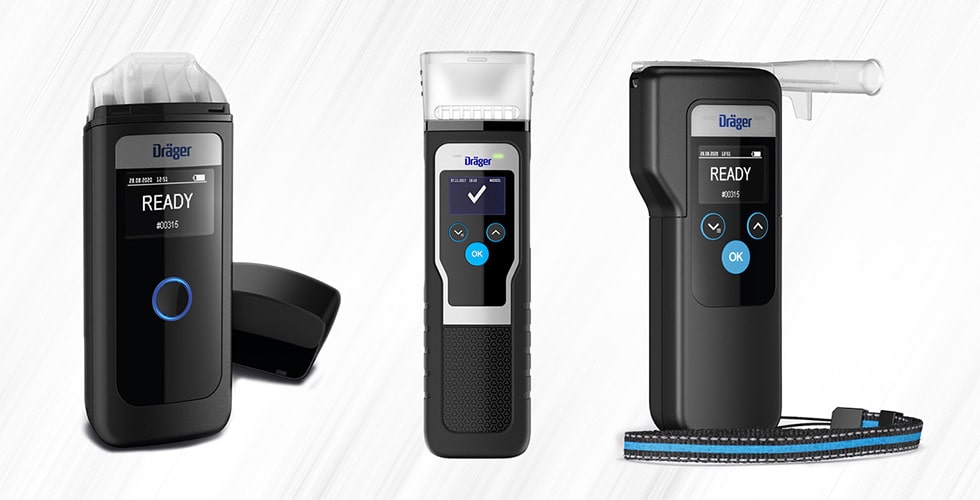Everything you need to know about your personal electronic breathalyzer
The electronic breathalyzer is a device that determines the blood alcohol content by measuring the alcohol level in the air exhaled by its user.
The electronic breathalyzer is a device that determines the blood alcohol content by measuring the alcohol level in the air exhaled by its user.
Unlike a single-use breathalyzer which displays a result according to a change in color of the chemical crystals it contains, the electronic breathalyzer gives a numerical result thanks to its digital display. It is also reusable since only the mouthpieces need to be replaced for each new user. The accuracy of the results depends on the type of sensor, its sensitivity and also compliance with its conditions of use.
How does a personal electronic breathalyzer work?
The electronic breathalyzer is an alcohol detector, therefore a device that measures the alcohol level using an electronic sensor. Each model is characterized, among other things, by its precision, the time interval required between each calibration, its durability and its format.
Principle of electronic breathalyzers
The pulmonary air alcohol level is correlated with the blood alcohol level. By measuring it, electronic breathalyzers estimate the blood alcohol level by displaying a numerical data. Single-use breathalyzers visually indicate whether or not the legal alcohol limit has been exceeded, based on a change in the color of the crystals at very specific intervals (0.02, 0.05 and 0.08). Electronic breathalyzers therefore indicate an alcohol level numerically.
Depending on the device, an electronic breathalyzer displays a result:
• In mg/l
• In g/l
• In % BAC (blood alcohol content), i.e., the percentage of alcohol expressed in g/100 ml of blood
• In ‰ BAC.
The sensors of electronic breathalyzers
Electronic breathalyzers can have four different types of sensors:
• Semiconductor sensor: found in less expensive devices, it has a higher margin of error than the electrochemical sensor.
• Electrochemical sensor: more precise, this is the type of sensor with which the devices used by the police are equipped and which is most often found in the detectors sold to individuals.
• Infrared Spectroscopy Sensor: This is a latest generation sensor with improved accuracy and recently approved by FAD and DOT.
• Replaceable and pre-calibrated intelligent sensor module with PRISMTM technology: it is found, among other things, in a device intended for individuals. Inserting this sensor means that the alcohol detector does not need to be calibrated according to the number of uses. The consumer only has to change the sensor of his electronic breathalyzer himself. A manipulation that only takes a few seconds.
Technical characteristics of an electronic breathalyzer
An breathalyzer is characterized by several parameters:
• Accuracy of LCD (liquid crystal display) display: two or three decimal places displayed after the decimal point (ex.: 0.00 or 0.000).
• Detection range: usually between 0.000 and 0.400% BAC (blood alcohol content).
• Sensitivity: the margin of error of the result, generally ± 0.05 (95% accuracy) for breathalyzers equipped with electrochemical sensor and ± 0.1 (90% accuracy) for breathalyzers with semi-automatic sensor.
• Calibration frequency: usually performed after 12 months of use or depending on the number of tests performed.
• Preheating time required before use: it varies according to the type of breathalyzer.
• Standard: an electronic breathalyzer is approved by the FDA.
Personal electronic breathalyzer: how to use it?
In order to obtain an accurate and reliable result, the use of an electronic breathalyzer must respect a set of rules. Without this, the measurement of the alcohol level may be distorted.
Calibration of a personal electronic breathalyzer
The components of an electronic breathalyzer lose some accuracy over time due to usage. The device must therefore be calibrated regularly, otherwise the blood alcohol results will be distorted. The calibration of an electronic breathalyzer is carried out in a specialized center; the consumer can go to the premises or send his device by post. To ensure optimal operation, an electronic breathalyzer should be calibrated once a year, even if it is not used much.
Compliance with the conditions of use of an electronic breathalyzer
Climatic conditions affect the result of a digital breathalyzer. Therefore each electronic breathalyzer indicates a minimum and maximum temperature for use. Beyond these limits, the accuracy of the BAC measurement may be compromised.
What are the differences between a personal electronic breathalyzer and a professional device (used by companies)?
An electronic breathalyzer must be chosen according to its use. A personal breathalyser is perfect for occasional use, so for an individual. A professional breathalyzer that is used in a business environment will have to withstand more intensive use.
The personal electronic breathalyzer
This type of digital breathalyzer is distinguished by a more affordable price. Usually smaller in size, this type of device works with alkaline batteries. Some electronic breathalyzers display the results directly on the screen of a smartphone, while most display them directly on the device. The supplied mouthpieces are washable and reusable. This type of breathalyzer is ideal for occasional use.
The professional electronic breathalyzer
Some companies perform blood alcohol screening tests on their employees under certain conditions or during events (parties, 5 to 7, retirement, etc.). This type of breathalyzer requires a professional device, capable of carrying out each test as quickly as possible. The preheating time should therefore be as short as possible as well. The electronic breathalyser must be able to provide many results before requiring calibration. Finally, this type of device is usually supplied with many washable and reusable mouthpieces.
What are the advantages of an alcohol test carried out with an electronic breathalyzer?
The electronic breathalyzer offers many advantages over the single-use breathalyzer.
• It is reusable
• It has no expiry date
• Results are displayed numerically
• Although its price is higher, it is more cost-effective in the long run than the single-use breathalyzer.
The display of the measured alcohol content on the LCD screen allows the driver, among other things, to comply with the various laws relating to the alcohol content permitted in each Canadian province or country.
For every driver or event professional, an electronic breathalyzer is an essential guarantee of safety. To learn more about our products, discover our range of breathalyzers.







